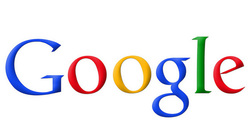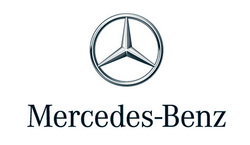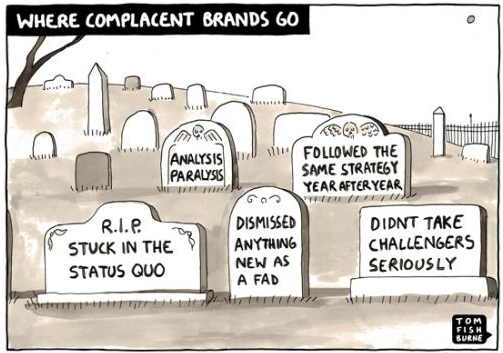|
A name can be described as "a word or set of words by which a person or an object is known, addressed, or referred to". However, it is so much more than just that. A name gives associations, meaning and flavour to a person, an object or a brand. It reminds of experiences and it will quickly give you certain emotions and connotations such as a good, bad or neutral gut feeling. So what’ is in a name? Actually, a lot, much more than you can imagine. Choosing a name for your company carefully is therefore one of the most important decisions you will make, especially for a start-up. Choosing a name can be a tricky thing if you don't know the relevant techniques. When you know the methods of developing a brand name it will be much easier for you to pick the right name for your company, one that makes you stand out from the crowd. To inspire you, let's explore some popular name techniques and examples of how world famous brands got their names. 1. Descriptive: A name that says what the company/brand does. Usually the company uses two different words to create one brand name.  China Mobile is a Chinese state owned telecommunications company that provides nationwide telecoms services. Other examples: Hoover, General Electric and Whole Foods. 2. Coined/Invented: Playful or poetically constructed names that are based on rhythm and the experience of saying them. It sounds like a word but have no dictionary meaning.  Google The name Google is a play on the word “googol” which is a mathematical term for the number represented by the numeral 1 followed by 100 zeros. This reflects the founders, Larry Page and Sergey Brins, mission to organize infinite amount of information on the web. Other examples: Yahoo, Bing and Accenture 3. Acronym: An abbreviation formed from the initial letters of other words and pronounced as a word.  IKEA is inspired by the founder’s initials “ Ingvar Kamprad”, the first letter of his family farm “Elmtaryd” and his birthplace “Agunnaryd”. Other examples: IBM, BMW and SAP 4. Evocative: Evocative brand names say nothing about what you do. Instead they evoke the positioning of a company or product through an unexpected, yet relevant hint or perception.  Victoria’s Secret. The company was founded by Roy Raymond based on the insight hat most men felt embarrassed when buying lingerie for their women. He set up a shop in Palo Alto in 1977 where men were suppose to feel comfortable in an American vision of an English boudoir. The brand was called Victoria’s Secret after Queen Victoria, who was the regent during a very repressed era in time. The name suggested a veil of respectability pulled over “secrets” hidden underneath. However, in marketing only to men, Raymond forgot that most of a women’s underwear is purchased by the women themselves. A new owner took over and in the 1990s the marketing and stores changed to have more appeal for women, leading to today’s success. Other examples: Virgin Airlines, Innocent Smoothies and Tropicana 5. Founders name/merged: Simply a name that consists of the founders names.  Mercedes-Benz. Karl Benz was a German innovator and founder of the motor company Benz & Cie in 1883. Benz largest rival was Daimler, another German motor company, founded by Gottlieb Daimler. One of Daimler’s business partners was Austrian investor Emil Jellinek who had a passion for motor sport. Jellinek was promoting, selling and racing in Daimler cars under the pseudonym “Mercedes”. Mercedes was the Spanish name of his young daughter, meaning, “grace”. Jellinek's racing success in the important Nice Week in 1901 led to an agreement with Daimler that gave name to a new innovative engine called Daimler-Mercedes. In 1926, Benz and Daimler merged and formed a new company called Daimler-Benz AG where a joint trademark was created - the famous three-pointed star – which still adorns Mercedes-Benz vehicles. Other examples: Adidas, Johnson & Johnson and Ericsson. 6) Real words: Names that are re-purposed words and work through a metaphor or indirect association. Such names cannot be generically descriptive as they wouldn’t be protectable trademarks. Can be difficult and expensive to trademark.  Apple: The name came from a driving conversation between the founders, Steve Jobs and Steve Wozniak. Steve Jobs was coming back from a visit to an “apple orchard” and suggested a name for their company – Apple Computer. They both tried to come up with technical-sounding names that were better, but couldn’t think of any good ones. Apple was so much better and that became the brand. Other examples: Orange, Fox and Amazon. 7) Compound: A name that is a hybrid, formed from two existing words, often with the first word receiving the main emphasis in pronunciation. An easy way to create new words with limitless number of possible combinations.  YouTube: The history of YouTube began in 2005 when the founders activated the Internet domain name "YouTube.com" and started to create a video-sharing website on which users could upload, share, and view videos. Other examples: Band Aid, LinkedIn, Face Book and Firefox. Naming process
With the above naming techniques in mind you can now start to create a name for your company. At Lavandel, we recommend using the following process: 1) Start by writing a brief with criteria’s and considerations for the new name. Use your vision, brand strategy and the market your company is operating within. 2) Conduct a creative name brainstorming consisting of key people who thoroughly understand your brand and vision. If you have a brand platform already, use it as a starting point as it should be aligned with the new name. 3) Define themes that are appropriate for your brand, based on your brand values and brand essence. Explore the different types and techniques of names (common are descriptive, evocative, coined/invented, compounds, associations, experiential, acronyms and merged/ founders name). All of those types can be included in your brainstorming as long as it supports your brand objectives. 4) Evaluate the names. To find a winning name you need to ask yourself the following questions: · Is it distinctive and unique? Connected to your brand essence? Does it differentiate you from other companies in the market? · Is it memorable? · Does it inspire your target audience? Is it simple and clear with positive connotations? · Is it easy to spell and pronounce? How does it sound? Is it short and concise? · Does it give appropriate associations? Does it mean something else in another language? Is it culturally neutral in a global context? · Does it have legs and longevity? Can it grow with your brand and be used for sub-brands? · Can it be protected? 5) Choose a name that can tell a story behind your company. The story can expand over time and enable your brand to stand out in the crowd. 6) When you have decided for a name it is necessary to trademark it in all current or future markets where you will operate. You also need to consider all digital channels where you need to own your name. 7) Time to launch and implement your new name across all channels. Be sure to have a plan for managing your brand long-term as this will be one of your key investments for future success. Image sources: Apple, Mercedes-Benz, Victoria's Sectret, IKEA, China Mobile, YouTube Once upon a time there was a celebrated Finnish telecom brand called Nokia. Nokia was the king of mobiles, an undisputed market leader across the globe with instantly recognizable devices, celebrated marketing campaigns and the famous signature logo, the holding hands. Most of us, no matter what country we were living in, had a Nokia as our first mobile. In 2007 Nokia had almost 35% of the mobile and 50% of the smartphone market, it was perceived as one of the most valuable and admired brands in the world.  Today, Nokia is a far cry from where the brand once was and its new owner Microsoft has just announced that they will drop the Nokia brand from smartphones. How could it all go so wrong? There are several causes of the downfall and it can be an important lesson to learn also for brands in other industries. The rise and fall of a brand can be difficult to predict and almost impossible to stop when the snowball has started to roll. Looking at Nokia, despite being a dominant market leader the company failed to recognize the drastic change in the industry and rapid transition of mobiles into smartphones. Being a company dominated by engineers, it focused more on hardware than software, which was an underestimation that proved fatal. As a comparison, when Steve Jobs launched the iPhone in 2007, Apple understood that design was important but that the rest was all about the software and attractive applications. Nokia’s choice of future operating system turned out to be a big mistake, first going with Symbian and then changing to Windows instead of launching Android as most of their competitors did, except Apple. It also appears that Nokia’s management spent too much time with internal politic and was not agile enough when it came to important decision making. They – and their teams – seem to not have prioritized to keep an ear on the ground, recognizing what was happening with the market and their customers. As a final straw, Nokia clearly overestimated the strength of its brand. Competing in a high tech industry means that customers will expect constant innovation from your brand to stay loyal and Nokia did not manage to deliver on that. Instead it was perceived as behind its competitors and quickly lost market shares to Samsung, Apple and HTC. Image concerned customers did not want to be seen with a device that was not perceived as “cool” anymore, but more associated with bus drivers and low income classes. Once an aspirational brand, Nokia’s image quickly faded away and the company was forced to close down its flagship stores all over the world . When the Microsoft acquisition of Nokia was finalised in April 2014, an era was coming to an end. Recently it was announced that the Nokia brand would be dropped from its Lumia smartphones but continue to feature on lower-priced feature phones for the next coming years. It's sadly the end of the road of Nokia as a mobile leader. Once Finland’s most beloved company and one of the world’s most prominent brands will soon end up in oblivion. A learning from the case of Nokia is, never become a complacent brand. Will it be possible to rebuild the Nokia brand? Maybe. Nokia comes from a background as a conglomerate with many crucial mobile industry patents up its sleeves. Clues to their future lie within the new strategy and management. Lets see what 2015 will bring and if there is a chance for a revival of the brand. Image sources: nokia.com, journeyguy.com, tom.fishburne, techinasia.com, techcrunch.com.  It has been hard to miss the news that Facebook is buying WhatsApp for a whopping sum of $19 billion. Large deals in the mobile and tech industry are nothing new but this one plays in another league. Facebook has defended the deal, citing the huge potential, popularity and value of the messenger service that WhatsApp is providing. Even if WhatsApp only has been on the market for a few years, they currently have around 450 million users and growing exponentially, where the goal is to achieve 1 billion users. WhatsApp has built its brand without any marketing or advertising activities. Instead, the objective has been to develop a direct relationship with its users and avoid clutter. The company has not collected any personal information from its users except from their phone number. That is a quite different strategy from Facebook who has been forced to focus more on advertising revenues, meaning they need to collect personal data from their users. This is something that has turned away some users from Facebook and might be a worry now also for the users of WhatsApp. However, just like Instagram – that was bought by Facebook in 2012 – WhatsApp will continue to operate independently with its own brand, strategy and HQ. So what is the brand strategy behind buying WhatsApp? Facebook has previously bought more than 40 companies, mainly small start-ups who provided great talent or interesting features. The acquisitions of Instagram and WhatsApp are different. It seems like Facebook is now aiming to build a portfolio of market leading brands with large potential that offer services that are complimentary to Facebook and who already have a large user base. This is a similar brand strategy to the big FMCG companies like P&G, Unilever and Nestle who all focus on building “House of Brands” consisting of successful and independent brands that supports their overall vision. Being able to offer strong brands like Instagram and WhatsApp will support Mark Zuckerbergs vision of “making the world a more open and connected place, offering engaging and outstanding services”. It will be interesting to see what brand will be the next one in the Facebook family. Yahoo has recently unveiled their new logo after a 30-day campaign during which a variation of the logo was presented each day on the company web site, then the final candidate was launched. The new logo has been designed by CEO Marissa Mayer and a team of internal designers during one weekend in summer. The background due to Mayer: “We knew we wanted a logo that reflected Yahoo – whimsical, yet sophisticated. Modern and fresh, with a nod to our history. Having a human touch, personal. Proud.” OLD LOGO NEW LOGO The revamp is the first major identity change in Yahoo’s 18-year history and this could have been a great opportunity to signal a positive change for the company. Instead the designers have left more or less all major elements of the logo intact except for the font where the elaboration has been focused. Unfortunately the new logo does not really fit Mayers brief as it feels more engineered, structured and boring than fresh and modern. More business-like than whimsical and personal. The new font also makes it look more like a brand in the beauty sector than a proud internet brand. Out of the 30-day campaign I believe there were several options that suited the brief better than the final one.
The feedback from the public has so far been mainly negative where a majority prefers the old logo. That can be due to the fact that most customers don’t like changes. However, don't forget the disastrous feedback that GAP, Tropicana and British Airways faced from their customers when conducting big rebranding projects. This lead them to change back their identities causing big costs and embarrassment. Branding is an important strategic discipline and a rebranding is a big operation for any brand. A new logo should be a core element of a professionally planned brand launch consisting of a new brand strategy, new vision, new brand positioning, new customer promise etc. Yahoo should therefore have focused their efforts on defining a strong brand foundation including the elements just mentioned, then using good creative design to conceptualize the brand strategy into a visual identity where the logo is a main expression. Just re-designing the old logo makes this look more like a cosmetic overhaul than a much needed signal of strategic brand change. In the highly competitive arena where Yahoo is playing, they need to be able to tell customers why they should choose Yahoo and what makes Yahoo different. A "new" logo is not enough. Etihad's new brand campaign
The phrase " The world is our home and you are our guest" is catchy in a sense that might provocate more established aviation companies, where focus lies on customers and less on guests. The purpose is to make a bold brand statement and tell the world a brand story. However, the question is what value will this add to the Etihad brand and how does this make Etihad different from its competitors? The future will tell whether going global will infuse even more fierce competition at home with older sister Emirates. |
AuthorRosie Kropp, Categories
All
Archives
March 2015
|









 RSS Feed
RSS Feed